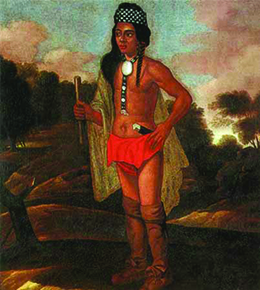| << Chapter < Page | Chapter >> Page > |
Everywhere, Africans resisted slavery, and running away was common. In Jamaica and elsewhere, runaway slaves created maroon communities , groups that resisted recapture and eked a living from the land, rebuilding their communities as best they could. When possible, they adhered to traditional ways, following spiritual leaders such as Vodun priests.
While the Americas remained firmly under the control of native peoples in the first decades of European settlement, conflict increased as colonization spread and Europeans placed greater demands upon the native populations, including expecting them to convert to Christianity (either Catholicism or Protestantism). Throughout the seventeenth century, the still-powerful native peoples and confederacies that retained control of the land waged war against the invading Europeans, achieving a degree of success in their effort to drive the newcomers from the continent.
At the same time, European goods had begun to change Indian life radically. In the 1500s, some of the earliest objects Europeans introduced to Indians were glass beads, copper kettles, and metal utensils. Native people often adapted these items for their own use. For example, some cut up copper kettles and refashioned the metal for other uses, including jewelry that conferred status on the wearer, who was seen as connected to the new European source of raw materials.
As European settlements grew throughout the 1600s, European goods flooded native communities. Soon native people were using these items for the same purposes as the Europeans. For example, many native inhabitants abandoned their animal-skin clothing in favor of European textiles. Similarly, clay cookware gave way to metal cooking implements, and Indians found that European flint and steel made starting fires much easier ( [link] ).

The abundance of European goods gave rise to new artistic objects. For example, iron awls made the creation of shell beads among the native people of the Eastern Woodlands much easier, and the result was an astonishing increase in the production of wampum , shell beads used in ceremonies and as jewelry and currency. Native peoples had always placed goods in the graves of their departed, and this practice escalated with the arrival of European goods. Archaeologists have found enormous caches of European trade goods in the graves of Indians on the East Coast.
Native weapons changed dramatically as well, creating an arms race among the peoples living in European colonization zones. Indians refashioned European brassware into arrow points and turned axes used for chopping wood into weapons. The most prized piece of European weaponry to obtain was a musket , or light, long-barreled European gun. In order to trade with Europeans for these, native peoples intensified their harvesting of beaver, commercializing their traditional practice.

Notification Switch
Would you like to follow the 'U.s. history' conversation and receive update notifications?